The human race is increasingly trying to reduce its reliance on nature by creating artificial environments that mimic natural aspects. One of the ways we are achieving this fete is by creating full spectrum lighting for indoor grow lights and improving wellness. Full spectrum lighting is like simulated sunlight, so making it requires the ingredients found in natural daylight. We have looked at these ingredients in detail below to define what this lighting is all about. Take a look!
What is Full Spectrum Lighting?
Artificial light containing a fuller and complete visible light spectrum can substitute natural sunlight and have similar beneficial effects on animal and plant life.
Therefore, most people define whole spectrum light as any light source with a color temperature ranging from 5000K to 6500K and a CRI above 96.
But natural sunlight contains more than just the visible spectrum because plants and animals rely on its non-visible wavelengths, such as UV and infrared light.
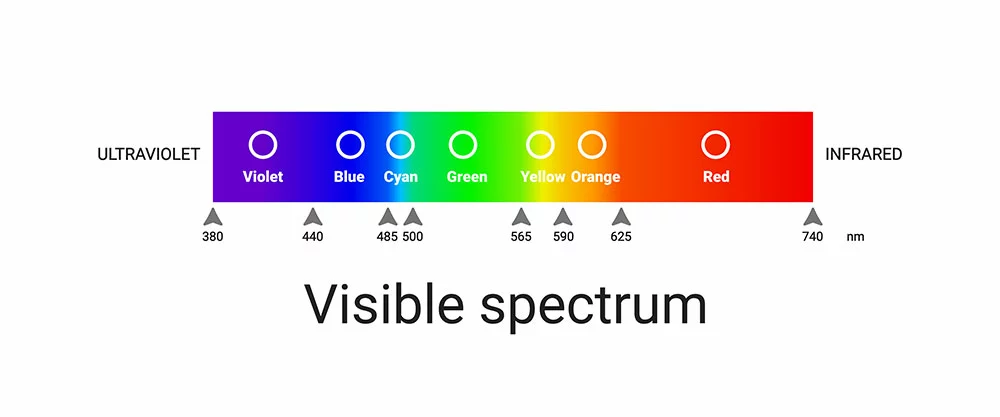
The visible spectrum
Additionally, natural light from the sun changes during different times of the day. It tends to be a bit blue during the daytime and reddish or yellowish at dusk or dawn.
Therefore, there is no single definition for a full-spectrum light bulb. Depending on your needs, a full spectrum bulb can be one containing the entire visible light spectrum plus UV & infrared light (non-visible light spectrum). It could also be a bulb producing a balanced and complete visible light spectrum.
What is Visible Light?
Visible light is white light, which consists of all the rainbow colors. This white light radiation has a frequency range of about 380 nm to 700 nm, with the shortest wavelengths (closer to 380 nm) producing a violet/blue color. Longer wavelengths in this light band emit a red glow.
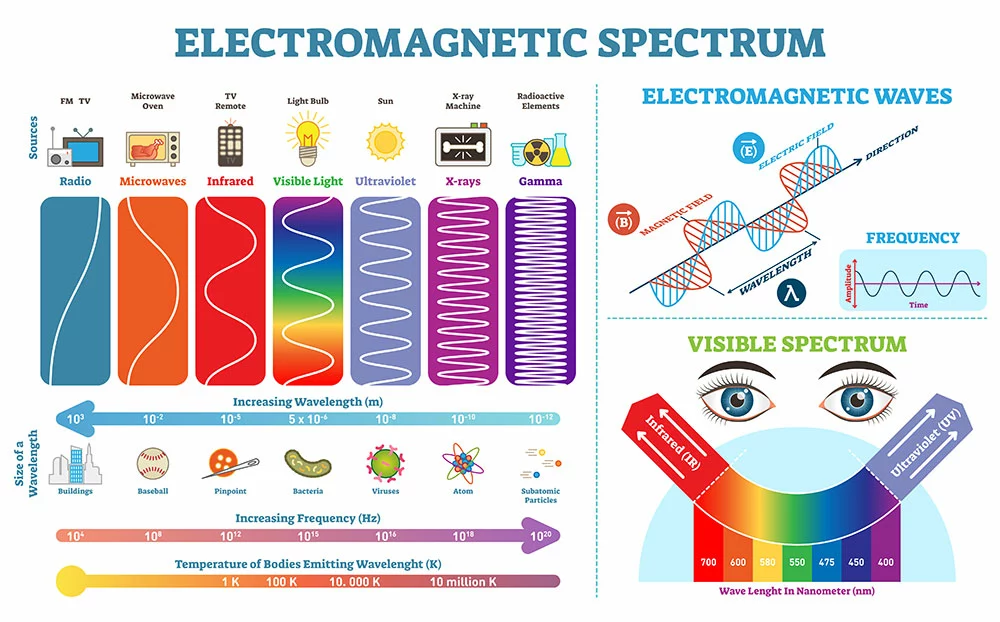
The electromagnetic spectrum (contains visible light and other electromagnetic waves)
Visible or white light exists as a narrow band in the middle of the electromagnetic spectrum, with infrared light immediately above the 700 nm wavelength. On the other hand, UV radiation sits right under the 380 nm mark.
Animal and plant life relies on the visible light spectrum and the non-visible spectra nearest both ends of the white light frequencies. These primarily include blue light and red light wavelengths.
Metrics Defining Full Spectrum Lighting
As stated earlier, natural daylight varies at different times of the day. Therefore, you can define the full spectrum using the following metrics.
Color Temperature
Also known as Correlated Color Temperature (CCT), the color temperature rating is a measure used to define a light source’s whiteness and visual appearance. The metric indicates the bulb’s warmth or coolness in Kelvin units, with warm color temperatures appearing reddish/yellowish and having a lower Kelvin value. On the other hand, cooler color temperatures have a higher Kelvin value and appear bluish.
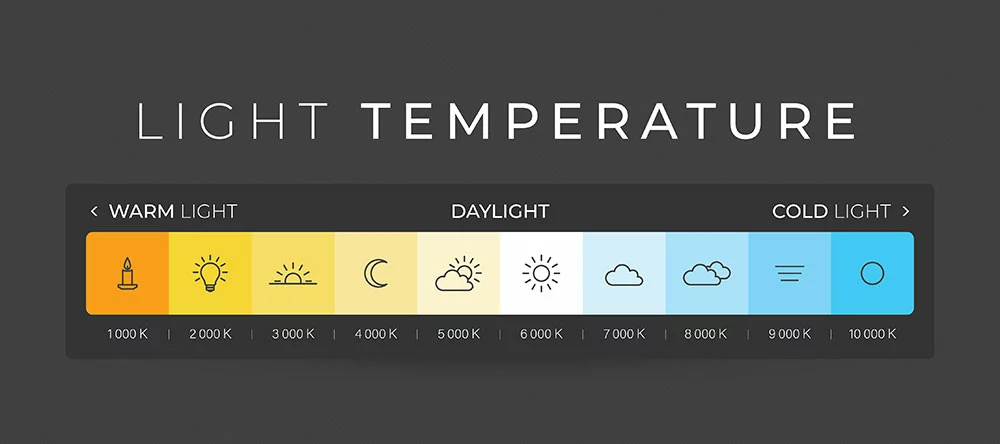
The color temperature scale
Midday sunlight has a color temperature of about 5500K, and this value is the approximate temperature used in full-spectrum light sources.
CRI (Color Rendering Index)
CRI is a quantitative measure that defines how accurately a light source replicates or compares to natural light. The CRI scale ranges from 1-100, and natural lighting from the sun has a rating of 100. Therefore, the higher the CRI rating, the more the light source attains full spectrum status.
Applications of Full Spectrum Lighting
One of the most typical applications of full spectrum lighting is SAD treatment. SAD (Seasonal Affective Disorder) is a condition brought about by the changing seasons, which minimizes exposure to sunlight, especially during fall and winter.
Light therapy treatment for SAD involves regulated exposure to full spectrum lights from light therapy boxes. These units produce cool or daylight white light that the body perceives as natural daylight. This exposure triggers the body’s circadian rhythm, creating an awakening and uplifting effect.
Other applications include the following.
- Triggering and stimulating alertness
- Enhancing personal well-being
- Grow lamps for healthy indoor plant growth
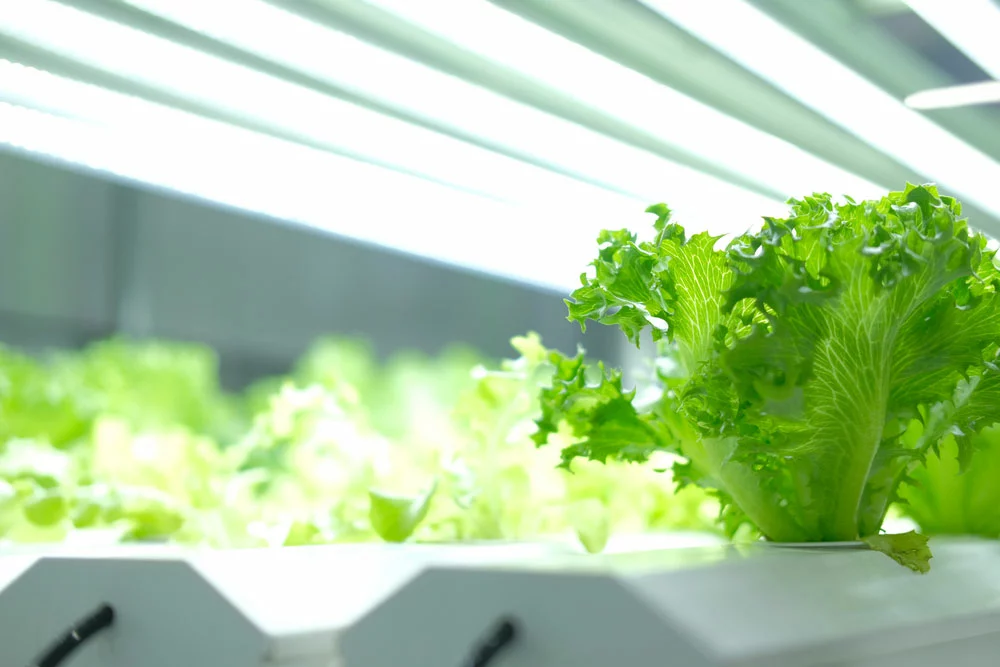
Plants growing on an indoor farm
- Providing light for indoor pets like birds
- Lighting freshwater aquariums (Marine and coral reef aquariums usually need intense blue light)

A well-lit tropical fish aquarium
Myths About Full Spectrum Lighting
There are three myths about full spectrum lamps that we need to demystify.
Health Benefits
There is no scientifically proven evidence to indicate the health benefits of natural spectrum light. Although light box therapy is a proven SAD medical treatment, it does not necessarily have to use full spectrum lamps.

A man sitting in front of a full spectrum light therapy box, which mimics sunlight
Energy Efficiency
Full spectrum light sources are not as energy efficient as people think. On the contrary, they consume more power than their non-full spectrum lamps because they contain high amounts of phosphors.
High-Quality Light
These lights might excel in factors like color rendering and quality, but you should consider uniformity, contrast, and glare when determining the light quality.
Advantages of Full Spectrum Lighting
- Better workplace productivity
- Higher visual sharpness and brightness levels for the same luminance
- Improved color rendering
Full Spectrum vs. Broad Spectrum Lights
Most light therapy boxes use broad-spectrum light because it eliminates the danger of UV radiation. Also known as pure white light, broad-spectrum light is the closest you can get to full spectrum light because it only lacks UV radiation. Usually, the light has a color temperature of 4200K and a CRI of 82.
However, full spectrum lighting imitates natural sunlight, including producing UV light. These light sources usually have a color temperature exceeding 5000K and a CRI of 90 and above, which results in a bluish or purple cast.
Lighting Technologies, Colors, and Energetic Effects
It is not easy to determine if a light source produces the full visible light spectrum with UV and infrared. However, different light technologies have varying properties, as shown below.
Incandescent Light Sources
Incandescent bulbs produce the full visible light spectrum plus a lot of infrared energy, which we perceive as heat. Therefore, its light spectrum is more towards the red side (700 nm), not blue. Such light is ideal for relaxing, winding down, and nourishing. Although these bulbs don’t have an energizing effect, they produce more of an uplifting feeling.

An incandescent light bulb
Halogen Light Sources
Halogen bulbs are enhanced incandescent lamps. Therefore, they emit full spectrum light, but with more blue light, not red, and give the benefits of incandescent bulbs, but with energizing effects.
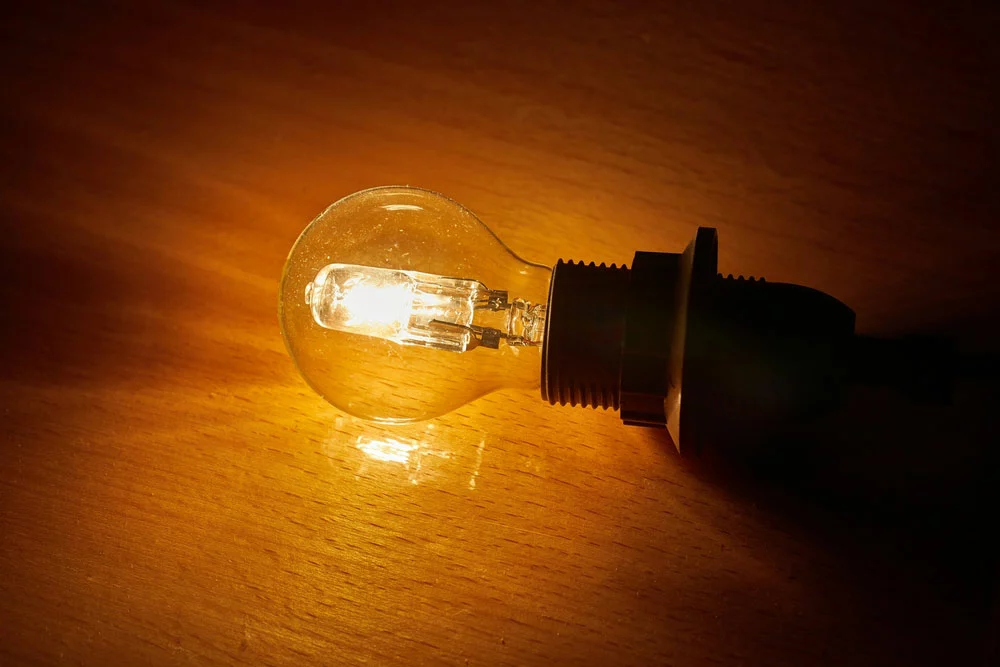
A halogen light bulb
Fluorescent Light Sources
Most fluorescent lamps emit cool or daylight white color temperatures in the 5000K to 6500K range. However, they can only be full spectrum lights if their CRI is over 96. Therefore, the light skews towards blue light, enhancing its energizing effects.
Some full-spectrum fluorescent sources dig deep into the UV band, making them ideal for providing UVB light to reptiles and birds in captivity to boost vitamin D synthesis. But the intensity of UV light is not sufficient to harm humans.
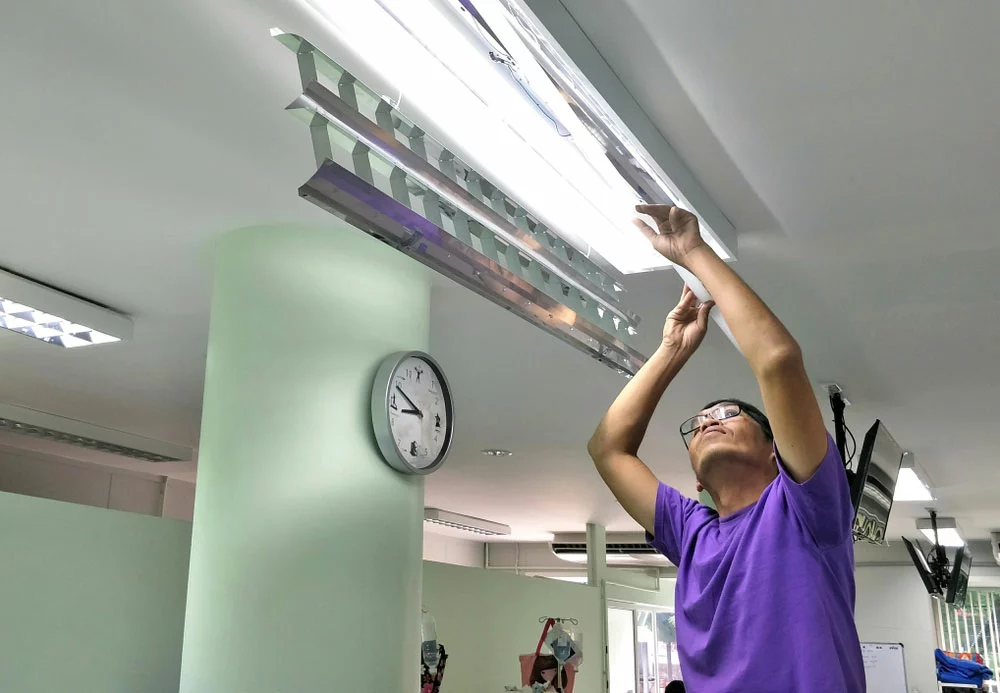
A fluorescent lamp in a hospital room
It is vital to note that some fluorescent bulbs or tubes emit warmer light, so their UV radiation and energizing effects will be negligible.
LED Light Sources
LEDs are versatile light sources because they can produce any light combination using digital diodes. Therefore, you can set them to emit any color temperature, hue, or full spectrum variety.
But LEDs have one downside; they do not produce infrared energy. This factor explains why they run without emitting heat. While this property makes them energy efficient, they might not create full spectrum lighting. Therefore, you should consider combining them with a few halogen or incandescent lamps to get the full spectrum.
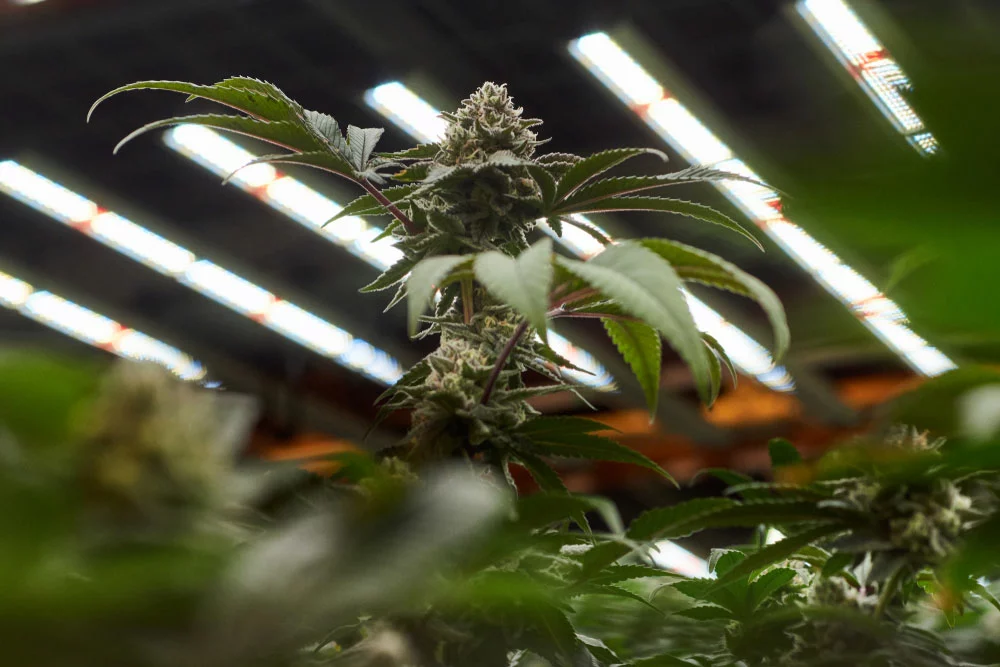
Full spectrum LED lights in an indoor cannabis farm. However, the LEDs are not genuinely full-spectrum light sources.
Wrap Up
There you have it! That’s it for this article. Full spectrum lighting has several benefits because it creates an alternative to natural sunlight. However, you need to pick the appropriate light sources to recreate daylight, and the description above should help you choose the right combination. If you have any comments or sentiments about full spectrum lighting, reach out, and we’ll get back to you asap.
